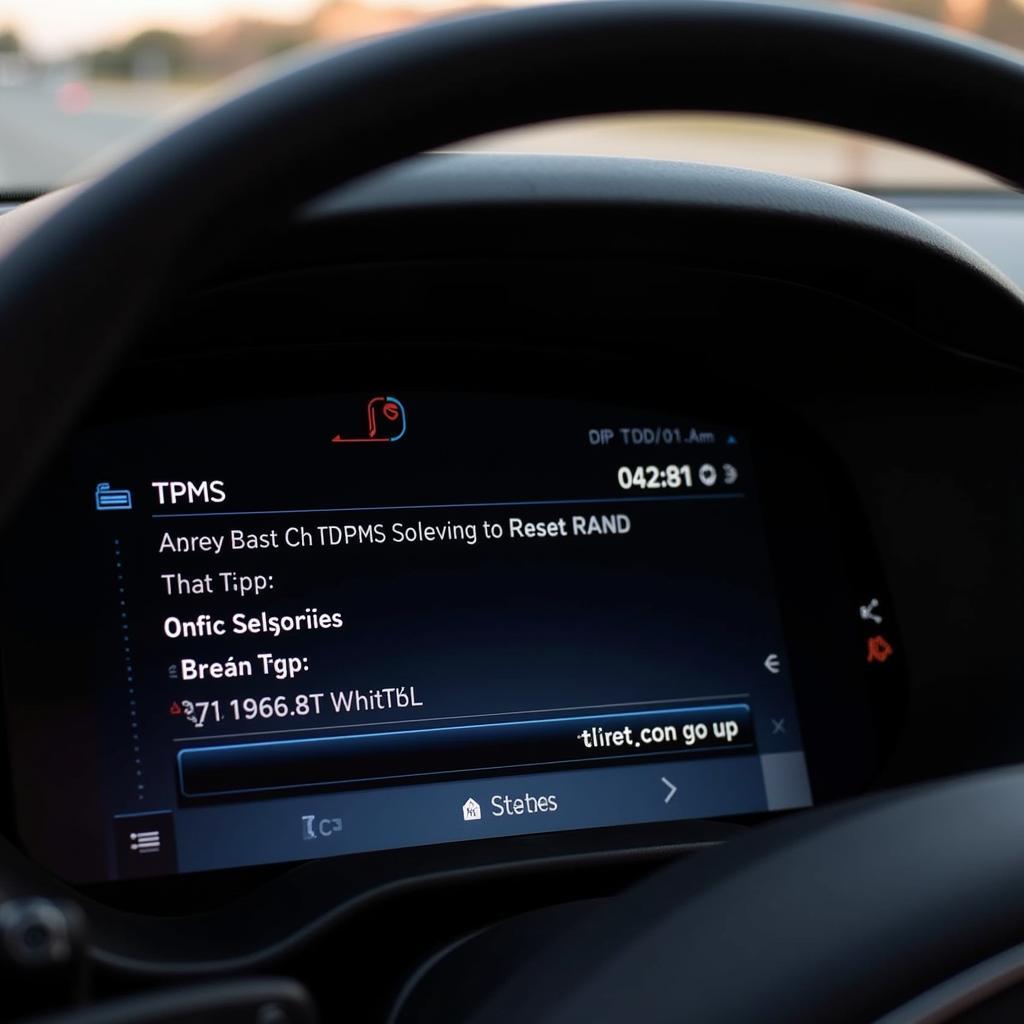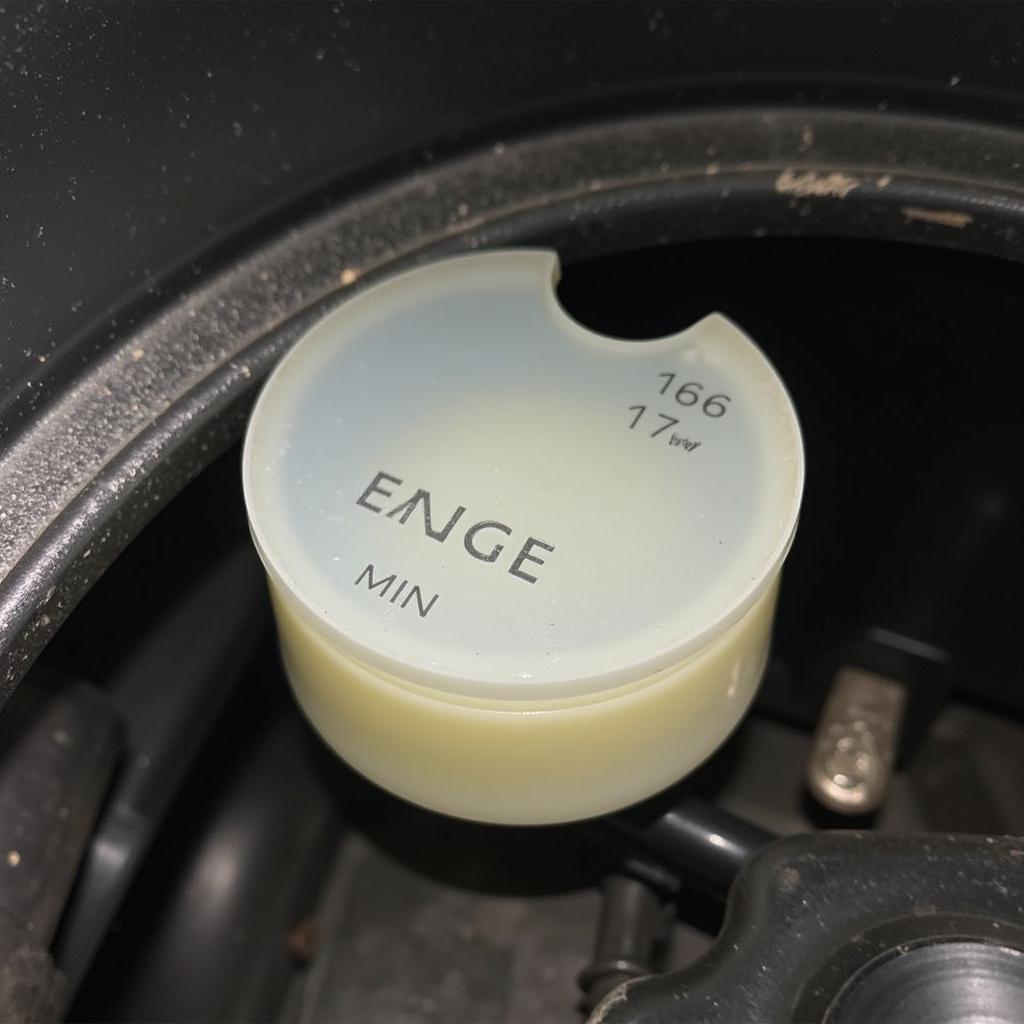The dreaded seat leon tyre pressure warning light. It illuminates your dashboard, instantly causing a knot of anxiety. What does it mean? Is it dangerous? This guide provides everything you need to know about the Seat Leon tyre pressure warning, from understanding why it appears to troubleshooting and fixing the problem.
The tyre pressure monitoring system (TPMS) in your Seat Leon is a crucial safety feature. This system continuously monitors the pressure in each tyre and alerts you if it detects a significant drop. Having correctly inflated tyres is paramount for safe handling, optimal fuel efficiency, and prolonging the life of your tyres. More on this later. Let’s first explore why that warning light might be staring back at you.
Why is My Seat Leon Tyre Pressure Warning Light On?
There are several reasons why your Seat Leon’s tyre pressure warning light might be activated. The most common cause is, of course, a low tyre pressure. However, other factors can also trigger the warning, including:
- Puncture: A slow puncture can gradually decrease tyre pressure, eventually activating the warning light.
- Faulty TPMS Sensor: Sometimes, the sensor itself can malfunction, sending incorrect readings to the car’s computer.
- Temperature Changes: Significant drops in temperature can cause the air inside your tyres to contract, leading to lower pressure.
- Recent Tyre Change: If you’ve recently had new tyres fitted, the TPMS may need to be reset. This involves a simple procedure, usually detailed in your car’s manual.
- Wheel Damage: Damage to the wheel itself, such as a bent rim, can affect the tyre pressure and trigger the warning.
Troubleshooting the Tyre Pressure Warning Light
If your Seat Leon’s tyre pressure warning light comes on, the first thing you should do is safely pull over and check your tyre pressures using a reliable gauge. Compare the readings to the recommended pressures, which are typically located on a sticker inside the driver’s side door jamb or in your car’s owner’s manual. If you find a tyre with significantly low pressure, inflate it to the correct level. If you are unsure about the process, consult a professional. Remember, driving on under-inflated tyres is dangerous and can lead to loss of control. You can find out more about brake issues, which can also be triggered by tyre problems, at brake warning light warns the driver of.
What if the Light Stays On After Inflating the Tyres?
If the warning light persists even after inflating your tyres to the correct pressure, the problem could be related to a faulty TPMS sensor, a system malfunction, or other issues. In this case, it’s recommended to have your Seat Leon diagnosed by a qualified technician. They can utilize specialized diagnostic equipment to identify the root cause and recommend the appropriate course of action. This could involve replacing a faulty sensor, recalibrating the TPMS, or addressing other underlying problems. More on this can be found at seat warning lights explained.
How to Reset the TPMS on a Seat Leon
The process for resetting the TPMS can vary slightly depending on the model year of your Seat Leon. Consult your owner’s manual for specific instructions. Generally, the process involves navigating through the car’s infotainment system to access the TPMS settings and initiating a reset. Sometimes, driving for a certain distance after inflating the tyres to the correct pressure will automatically reset the system.
“A correctly functioning TPMS is an essential safety feature,” says automotive diagnostic expert, John Miller. “It’s not just about avoiding a flat tyre; it’s about maintaining optimal vehicle control and fuel efficiency.”
 Resetting the TPMS on a Seat Leon
Resetting the TPMS on a Seat Leon
How to Prevent Tyre Pressure Issues
Regularly checking your tyre pressures is the best way to avoid TPMS warnings. Aim to check them at least once a month and before long journeys. Also, be aware of the impact of temperature fluctuations on tyre pressure. In colder weather, your tyres will lose pressure more quickly. Don’t forget to check your seat ibiza warning lights on dashboard for other potential issues. Also, understanding abs traction control brake warning lights all come on can help differentiate related warning signs.
Conclusion
The seat leon tyre pressure warning light is a vital safety feature designed to keep you safe on the road. Understanding what triggers it and how to address the underlying issues is crucial for maintaining optimal vehicle performance and safety. By following the advice in this guide and performing regular checks, you can minimize the chances of encountering this warning light and ensure a smooth and safe driving experience. If you’re experiencing other warning light issues, such as indicator seat belt warning, be sure to consult your vehicle’s manual or a qualified technician.
FAQ
- How often should I check my Seat Leon’s tyre pressure? At least once a month and before long journeys.
- What is the recommended tyre pressure for my Seat Leon? Check the sticker inside your driver’s side door jamb or your owner’s manual.
- What should I do if the TPMS light stays on after inflating the tyres? Have your car diagnosed by a qualified technician.
- Can temperature changes affect tyre pressure? Yes, colder temperatures can cause tyre pressure to decrease.
- How do I reset the TPMS on my Seat Leon? Consult your owner’s manual for specific instructions.
- Is it safe to drive with the TPMS light on? No, it indicates a potential safety hazard. Pull over and check your tyres.
- What could cause a faulty TPMS sensor? Physical damage, battery depletion, or general malfunction.

